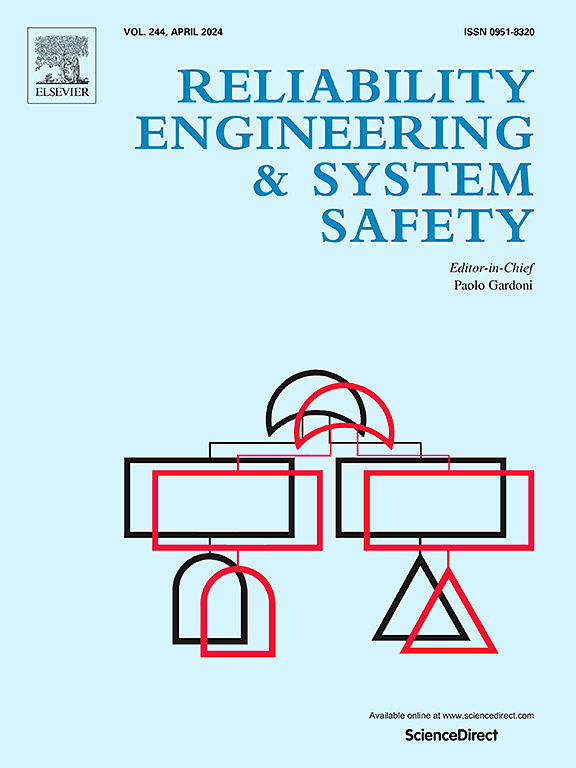Resilience-based estimation of the disaster waste disposal time considering interdependencies between waste disposal and road network systems under seismic and tsunami hazards in coastal communities
IF 9.4
1区 工程技术
Q1 ENGINEERING, INDUSTRIAL
引用次数: 0
Abstract
Tsunamigenic earthquakes have triggered damage to structures and infrastructure systems due to both ground motion and subsequent tsunamis, resulting in a huge amount of disaster waste. Since the disaster waste must be processed and transported through both the waste disposal system (WDS) and the road network system (RNS), the functionality loss of the two systems subjected to spatially correlated ground motion and tsunamis hinders the disaster waste removal. Therefore, disaster waste management must be developed by considering the effects of the cascading hazards on not only the capacity of processing facilities, but also the time required to transport disaster waste to the processing facilities (i.e., the interdependency between WDS and RNS). This paper presents a framework for estimating the disaster waste disposal time considering the interdependency between WDS and RNS under seismic and tsunami hazards. As a measure of a coastal community resilience after the occurrence of a strong earthquake, the probability of waste disposal completion at a time elapsed from the earthquake occurrence is estimated considering the uncertainties associated with predicting the time-dependent functionalities of the two systems. As an illustrative example, the proposed framework is applied to a coastal community in Mie Prefecture, Japan, to investigate the effects of the interdependency between the two systems on the disaster waste disposal time.
考虑沿海社区地震和海啸灾害下废物处理与道路网络系统之间相互依赖关系的灾害废物处理时间的基于复原力的估计
由于地面运动和随后的海啸,海啸性地震引发了对建筑物和基础设施系统的破坏,造成了大量的灾难浪费。由于灾害废物必须通过废物处理系统(WDS)和道路网络系统(RNS)进行处理和运输,两个系统在空间相关的地面运动和海啸的影响下功能丧失,阻碍了灾害废物的清除。因此,灾害废物管理的发展不仅要考虑级联灾害对处理设施能力的影响,还要考虑将灾害废物运送到处理设施所需的时间(即WDS和RNS之间的相互依赖性)。本文提出了一个考虑地震和海啸灾害下WDS和RNS相互依赖的灾害废物处理时间估算框架。作为一项衡量沿海社区在强震发生后恢复能力的措施,考虑到与预测两个系统的时间依赖功能相关的不确定性,估算了地震发生后一段时间内废物处理完成的概率。作为一个说明性的例子,所提出的框架应用于日本三重县的一个沿海社区,以调查两个系统之间的相互依赖性对灾害废物处理时间的影响。
本文章由计算机程序翻译,如有差异,请以英文原文为准。
求助全文
约1分钟内获得全文
求助全文
来源期刊

Reliability Engineering & System Safety
管理科学-工程:工业
CiteScore
15.20
自引率
39.50%
发文量
621
审稿时长
67 days
期刊介绍:
Elsevier publishes Reliability Engineering & System Safety in association with the European Safety and Reliability Association and the Safety Engineering and Risk Analysis Division. The international journal is devoted to developing and applying methods to enhance the safety and reliability of complex technological systems, like nuclear power plants, chemical plants, hazardous waste facilities, space systems, offshore and maritime systems, transportation systems, constructed infrastructure, and manufacturing plants. The journal normally publishes only articles that involve the analysis of substantive problems related to the reliability of complex systems or present techniques and/or theoretical results that have a discernable relationship to the solution of such problems. An important aim is to balance academic material and practical applications.
 求助内容:
求助内容: 应助结果提醒方式:
应助结果提醒方式:


